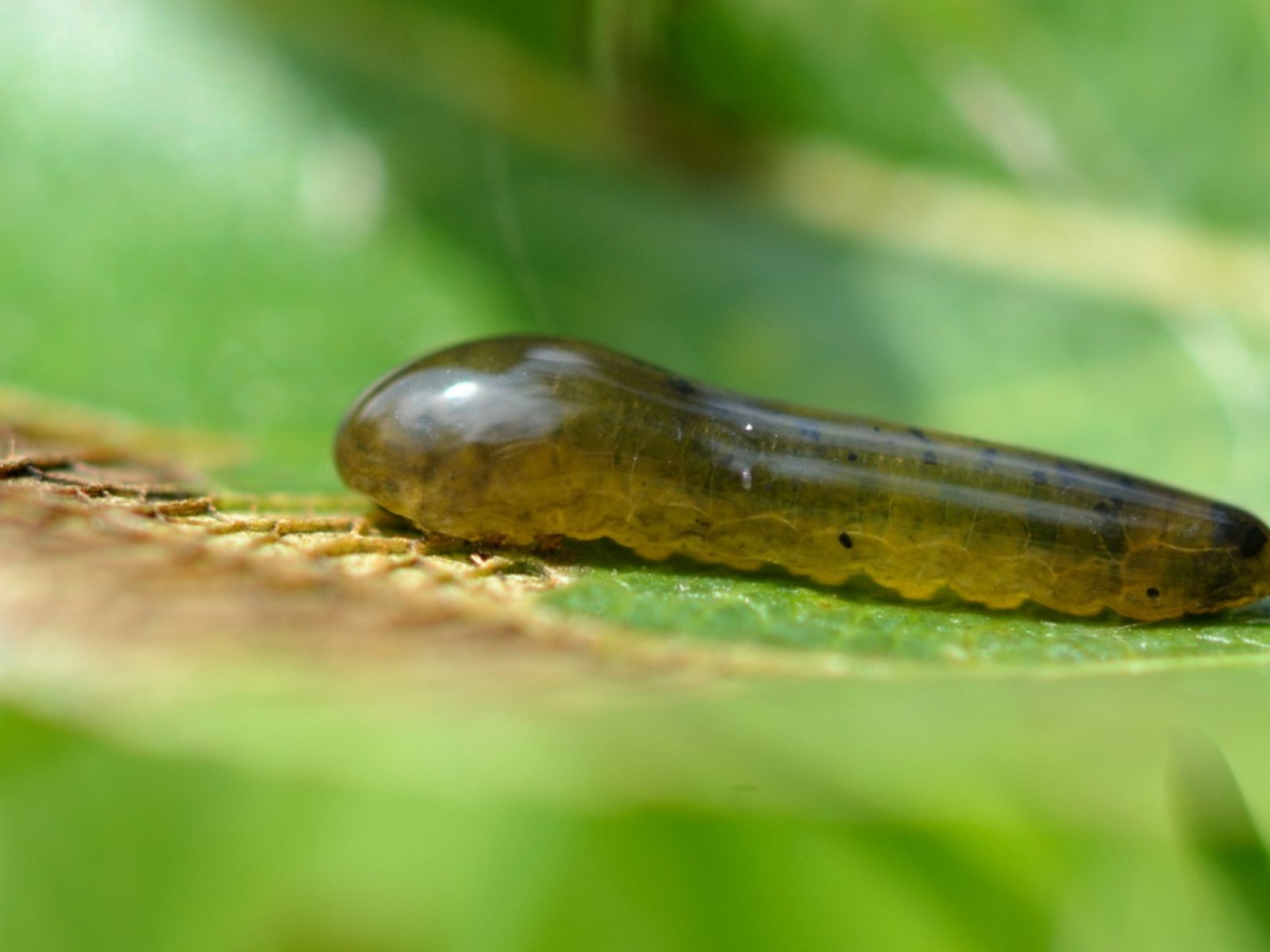Pear Slug Pests – How To Kill Pear Slugs In Gardens


Growing your own fruit can be very rewarding and save you money at the grocery store. However, when fruit trees become infected with disease or pests, it can be very disappointing and discouraging. If you notice skeletonized foliage on your pear or cherry trees, pear slugs could be the culprit. What are pear slugs? Continue reading to learn about pear slug pests, as well as tips for managing pear slugs.
What are Pear Slugs?
Pear slugs, also known as cherry slugs, are not actually slugs at all. They are actually the larvae of the pear sawfly (Caliroa cerasi). This larva has a slimy, olive green, slug-like appearance in their first four instars. In these earlier instars, pear slugs are somewhat tadpole shaped with larger rounded heads and tapered bottoms. In their fifth instar, shortly before burrowing into the soil to form their cocoon, they take on a more caterpillar appearance with yellow to orange color and ten legs. They overwinter in cocoons below the soil surface and emerge in spring as adult pear sawflies. After mating, sawflies lay eggs, which look like small blisters on the upper sides of foliage. Their larvae, or pear slug pests, then feed on the upper sides of the foliage, avoiding the thick leaf veins. It is believed that the pear sawfly is native to Europe but was brought to the United States unintentionally on plants during colonial times. While they do not bother peach trees, pear slug pests can infect other shrubs and trees such as:
They produce two generations each year, with the first generation feeding on foliage in late spring to early summer, and the second, more destructive generation, feeding on foliage in in late summer to early fall.
Managing Pear Slugs in the Garden
Usually, pear slug pests are more of a cosmetic problem, leaving unsightly skeletonized leaves. However, in extreme infestations, they can cause major defoliation of trees, reduced fruit size, and reduced blooms in the year following infestation. Pear slug control is more important in an orchard setting where populations can quickly get out of hand than in a backyard with just a few fruit trees. The first step in how to kill pear slugs is careful monitoring for their presence. Pear slug control methods will only work when these pests are present in their larval stage. Some common pear slug control methods are malathion, carbaryl, permethrin, insecticidal soaps, and neem oil. If you prefer to avoid chemicals, soaps, and oils in the garden, pear slugs can also be blasted off foliage with a hose end sprayer.
Gardening tips, videos, info and more delivered right to your inbox!
Sign up for the Gardening Know How newsletter today and receive a free copy of our e-book "How to Grow Delicious Tomatoes".
-
 Creative Ideas For Plant Containers: 7 Ways To Save Money And Add Charm To A Garden
Creative Ideas For Plant Containers: 7 Ways To Save Money And Add Charm To A GardenIf you are looking for great ways to add personality to your container gardening – and even save yourself some money – then try these creative ideas for plant containers
By Mary Ellen Ellis
-
 How To Make A Bouquet Garni Or Herb Bundle For Cooking
How To Make A Bouquet Garni Or Herb Bundle For CookingIf you’re a great cook, you may have made an herb bundle before. If this is a new idea, learn how to add sparkle and interest to your dish with a bouquet garni.
By Amy Grant